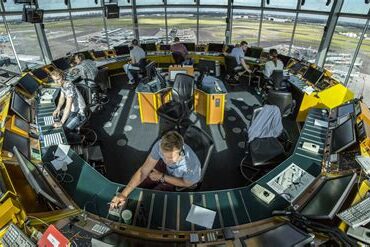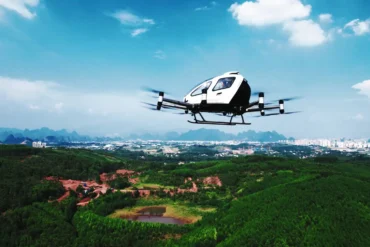Have you ever caught a glimpse of the fiery burst shooting out the back of a jet plane? That’s the afterburner kicking in to give the engine an extra boost of power. Let’s take a closer look at how these fiery add-ons work and what the future may hold for jet engine afterburners.
What Is an Afterburner?
An afterburner, also called a reheat system, is an extra component added to certain jet engines on military supersonic planes. Its main job is to give an extra thrust boost during supersonic flight, takeoff, and combat situations. It does this by injecting extra fuel into the jet pipe behind the turbine. This results in a big surge in thrust or power. The tradeoff is that it burns way more fuel and isn’t as efficient—but that’s considered okay for the short times it’s used.
How Afterburners Work Their Magic
A jet engine works a lot like a rocket engine. It generates thrust by shooting hot gases out the back end. Fuel, usually kerosene, is mixed with air entering the engine and ignited. This makes the air expand rapidly and blast out the back, creating forward thrust to propel the plane.
Modern jet engines often have a turbine component. This makes them more efficient and able to operate at lower speeds. The turbine has two jobs: one part compresses the incoming air before fuel is added, and the other captures energy from the exhaust to power the compressor, like a windmill.
Even with the turbine, there’s still plenty of oxygen left in the exhaust gases. The afterburner takes advantage of this extra oxygen by injecting more fuel directly into the exhaust stream and igniting it. This further heats and expands the gases, potentially increasing thrust by 50% or more!
The genius of the afterburner is that it substantially boosts thrust without making the engine too heavy or complex. It’s composed of fuel injectors, a combustion chamber, and an adjustable nozzle that integrates seamlessly with the jet engine. The adjustable nozzle is key for smooth operation with the afterburner on or off.
The Downsides of Afterburners
While afterburners deliver a big punch, they also come with some drawbacks.
The biggest issue is their huge appetite for fuel. Afterburners burn through fuel quickly, which can limit flight times for military planes wanting to stay airborne longer.
Efficiency takes a hit too. Injecting fuel straight into the exhaust wastes a lot of its energy, reducing overall efficiency.
The thrust boost varies. For example, the Concorde’s Olympus engines only got about a 17% increase. Today’s fighter jets typically see between 40-70% more thrust, but they guzzle way more fuel too.
Another potential issue is compressor stalls if the afterburner causes reversed airflow. This can often be avoided by widening the exhaust nozzle as thrust increases. But this adds weight and complexity to the engine.
Given their fuel-hungry nature, afterburners are best for when you need a ton of thrust fast – like short runway takeoffs, carrier launches, or dogfights. The SR-71 Blackbird was a rare exception, with afterburners that enabled extended use through air refueling each flight.
The Fuel Burn Rate is Mind-Blowing
Looking closer at afterburners reveals one standout trait, both awesome and awful – they are extremely fuel inefficient.
Modern fighter jets burn through around 60,000 pounds of fuel per hour at full afterburner. That’s nearly double the 36,000 pounds per hour without it! This insane rate means they can empty their entire fuel supply in just minutes of use.
Crazy Loud But Oh So Cool!
Afterburner-equipped jet engines are LOUD, even compared to regular jets, like going from a library to a packed concert.
At around 140 decibels, afterburners border on hazardous hearing damage levels. This earth-shaking noise comes from the tremendous wind shear as vast amounts of air are sucked in, ignited, and blasted out the back.
Conclusion
Afterburners give many jet planes an adrenaline-pumping speed boost, especially military aircraft. Despite hogging fuel, they remain popular with designers.
Aviation engineers think afterburners will continue playing a key role well into the 21st century. But improved stealth tech and more efficient designs may eventually replace them. For now, these fiery powerhouses are here to stay as critical tools for maxing out jet engine thrust.


















